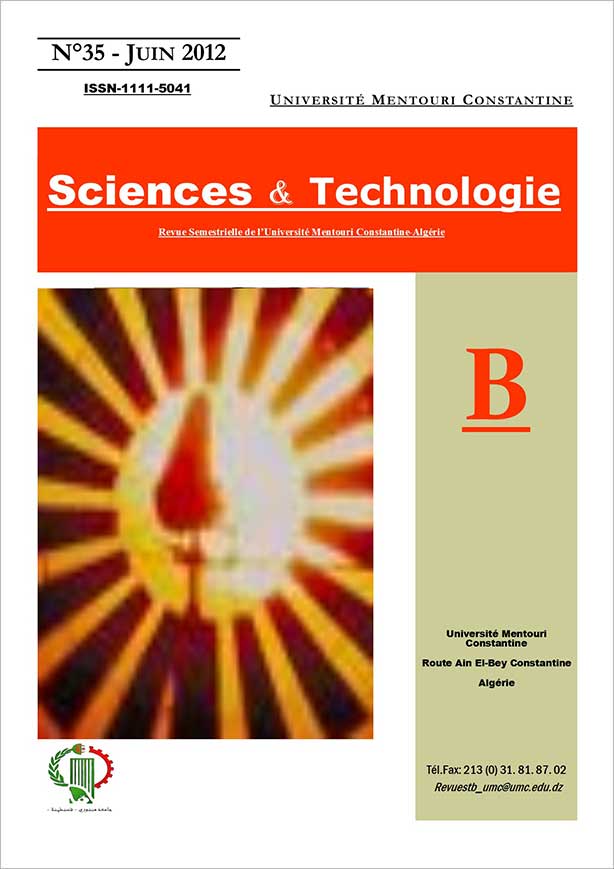A NEURAL NETWORK CONTROLLER OPTIMISED WITH MULTI OBJECTIVE GENETIC ALGORITHMS FOR A LABORATORY ANTI-LOCK BRAKING SYSTEM
Mots-clés :
ABS systems, Neural Network, Multi Objective Genetic AlgorithmsRésumé
In this work, we consider the design of a neural network controller for the ABS laboratory system witch’s highly non linear. The objective is to control the wheel slip. The controller is designed off-line using a multi-objective optimisation process solved using a multi objective genetic algorithms. The objective of the design process is to find a satisfactory controller with a reasonable structure. The structure is defined as the number of input variables and the number of neurons in the hidden layer. Thus the multi objective genetic algorithms has to minimize three objectives: the number of neurons in the hidden layer, the error which is the difference between the wheel slip reference and the real wheel slip and the third objective is the number and type of inputs to the network. The results of simulation are encouraging.
Références
J.R. Choa, J.H. Choia,W.S.Yooa, G.J. Kimb, J.S.Woob, “Estimation of dry road braking distance considering frictional energy of patterned tires”, Science Direct, Finite Elements in Analysis and Design 42, 1248 – 1257, 2006.
M. Gavas, M. Izciler, “Deep drawing with anti-lock braking system (ABS)”, Science Direct, Mechanism and Machine Theory 41, 1467–1476, 2006.
K. Karakoc, “Design of a Magnetorheological Brake System Based on Magnetic Circuit Optimization”, master of applied science thesis, BSc - Bogazici University, turkey, 2005.
Ming-chin Wu, Ming-chang Shih, “Simulated and experimental study of hydraulic anti-lock braking system using sliding-mode PWM control”, Elsevier Science Ltd, Mechatronics 13, 331–351, 2003.
W.P. Fu, Z.D. Fang, Z.G. Zhao, Periodic solutions and harmonic analysis of an anti-lock brake system with piecewise-nonlinearity, J. Sound Vib. 246 (3), 543–550, 2001.
A. B. Will, S. Hui and S. Zak, ”Sliding Mode Wheel Slip Controller for an Antilock Braking System”, Int. J. of Vehicle Design, 19(4), p523-539, 1998.
K. Hornik, M. Stinchombe, and H. White, ‘’Multilayer feedforward networks are universal approximators’’, Neural netwoks ,vol. 2, pp. 1083-1112, 1989.
K. L. Funahashi, ’’On the approximate realization of continuous mapping by neural networks’’, Neural Networks, vol. 2, pp. 183-192, 1989.
J. R. Jang, C. T. Sun and E. Mizutani, Neuro-Fuzzy and soft computing Englewoods Cliffs, NJ Prentice-hall, 1997.
D. Burton, A Delaney, S Newstead, D.Logan, B. Fildes, “Evaluation of Anti-Lock Braking Systems Effectiveness”, royal automobile club of vectoria Ltd, 2004.
The laboratory ABS system user manual, INTECO Ltd.
A. Isidori, “Nonlinear control systems”, (2nd edition), Berlin, Springer, 1989.
K. Hornik, M. Stinchombe, and H. White, ‘’Multilayer feedforward networks are universal approximators’’, Neural netwoks ,vol. 2, pp. 1083-1112, 1989.
M. Gilson, " Entraînement de réseaux de neurones récurrents à pulses appliqué à la modélisation d’un tissu neuronal biologique", thèse, école polytechnique de Montréal, canada, 2003.
N. Srinivas and K. Deb, “Multi-objective optimisation using non dominated sorting in genetic algorithms,” Evolutionnary Computation 2 (3), pp. 221-248, 1995.
Téléchargements
Publié
Numéro
Rubrique
Licence
Les auteurs publiant dans cette revue acceptent les termes suivants :- Les auteurs détiennent le droit d'auteurs et accordent à la revue
le droit de première publication, avec l’ouvrage disponible simultanément [SPÉCIFIER LA PÉRIODE DE TEMPS] après publication, sous la licence Licence d’attribution Creative Commons qui permet à d'autres de partager l'ouvrage en en reconnaissant la paternité et la publication initiale dans cette revue. - Les auteurs peuvent conclure des ententes contractuelles additionnelles et séparées pour la diffusion non exclusive de la version imprimée de l'ouvrage par la revue (par ex., le dépôt institutionnel ou la publication dans un livre), accompagné d'une mention reconnaissant sa publication initiale dans cette revue.
- Les auteurs ont le droit et sont encouragés à publier leur ouvrage en ligne (par ex., dans un dépôt institutionnel ou sur le site Web d'une institution) avant et pendant le processus de soumission, car cela peut mener à des échanges fructueux ainsi qu'à un nombre plus important, plus rapidement, de références à l’ouvrage publié (Consulter The Effect of Open Access).

